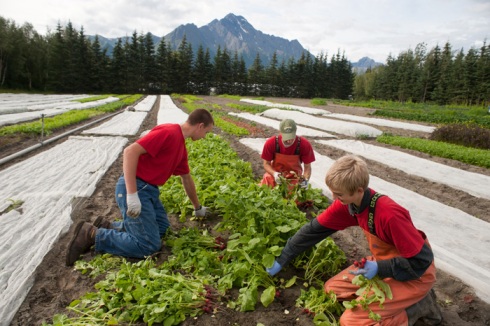In the USDA’s first-ever market report about the local foods economy in the U.S., the story that emerges is of two distinct farming cultures. Small farms, defined as those generating $50 grand or less in gross yearly sales, account for the vast majority of farms selling local fruits and vegetables, mostly to the actual consumer. Yet — no surprise here — a few much larger farms took in half of all dollars spent on local food, to the tune of $2.7 billion, through more traditional distribution channels.
Especially striking was how much time small-farm farmers devote to selling, as compared to the bigger guys. And yet these small-farm folks bring in an average of just $7800 per farm per year — and they don’t tend to work off farm, to boot. What that means is they take home less dough than just about anybody else in America including the unemployed.
This is worrying if you like eating locally. You wonder how many farmers will eventually decide they require more than sub-poverty level wages, no matter how obsessed and passionate they are about growing good things to feed people.
It’s also cause for soul-searching as a consumer. I know it’s heresy to suggest as much, but are farmers markets really the best way to ensure a strong future for local foods if they generate little income for farmers? Can retail markets evolve so that local foods are increasingly available, while paying small farmers a living wage? Will consumers continue to buy local produce if there isn’t a face and story to accompany it? Do the smallest craft farms deserve special support, or is the bigger-is-better model simply more sustainable?
What do you think?


Leave a comment
Comments feed for this article